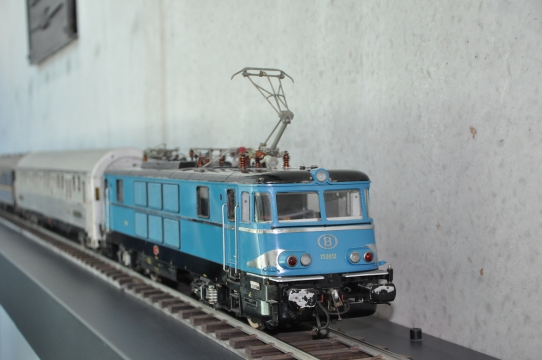At Train World Brussels, you can now discover Raymond Legrand’s unique collection of model locomotives, wagons and coaches. Claude van den Hove d’Ertsenryck, President of the Royal Belgian Association of Friends of the Railways, has entrusted the collection to the King Baudouin Foundation.
This is a real première: a model railway, measuring several hundred metres and made to the scale of 1:22.5, reproduces real railway vehicles, including locomotives, passenger coaches and goods wagons, which were in circulation at the beginning of the 20th century on the SNCB (Belgian national railway) network. Raymond Legrand, who was passionate about model making, devoted his life to creating this collection and it has now been saved for posterity.
Until recently, the Raymond Legrand collection had been in the care of the Association Royale Belge des Amis des Chemins de Fer (ARBAC – the Royal Belgian Association of Friends of the Railways), but in order to ensure its long-term conservation, Claude van den Hove d’Ertsenryck, the Association’s President, decided to entrust it to the King Baudouin Foundation, who subsequently gave it on long-term loan to Train World. There you can now discover some of the models of locomotives, passenger coaches and goods wagons, bringing your visit to Train World to an agreeable end.
Raymond Legrand – mad about models
Raymond Legrand was born in 1914 and from the age of 14 he was passionate about an activity that would become a lifelong project: building scale models (to 1:22.5) of real trains (locomotives, carriages and goods wagons) that were used on the Belgian (SNCB) rail network. Initially, his intention was to put all the models in glass cases, but he soon decided instead to motorize them.
In 1938, he began to build an amazing miniature network in an annex to his garden in Forest (Brussels). The network included several hundred metres of tracks, a reminder of the Brussels South Station and the railway sidings of Forest-Voitures. Everything was built by Mr Legrand himself: the rails, the crossings, the locomotives, the wagons and the buildings. Given the 1:22.5 scale on which the models were built, their detail was really pushed to extreme and the models that ran along the rails were of an astonishing realism.
Five locomotives (four steam and one electric) were built successively, beginning in 1929, with each one taking between 600 and 1,200 hours of work. Some measured as much as 1.20 m in length, were 30 cm high and weighed around 30 kg each. Around ten old SNCB K-type passenger trains and two Wagons-Lits carriages (each of around a metre long and mounted on bogies) were also built, along with some forty goods wagons. Every one of the pieces is handmade (and absolutely unique) and they exhibit remarkable precision and finesse. Driven by electric motors, the locomotives circulated around the network under their own power, pulling coaches or wagons. A control console, an optical control panel and appropriate electrical apparatus completed the equipment.
Mr Legrand died in November 1968, at the age of 64.
